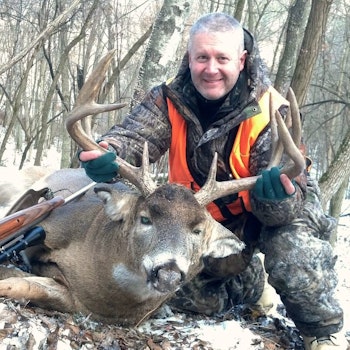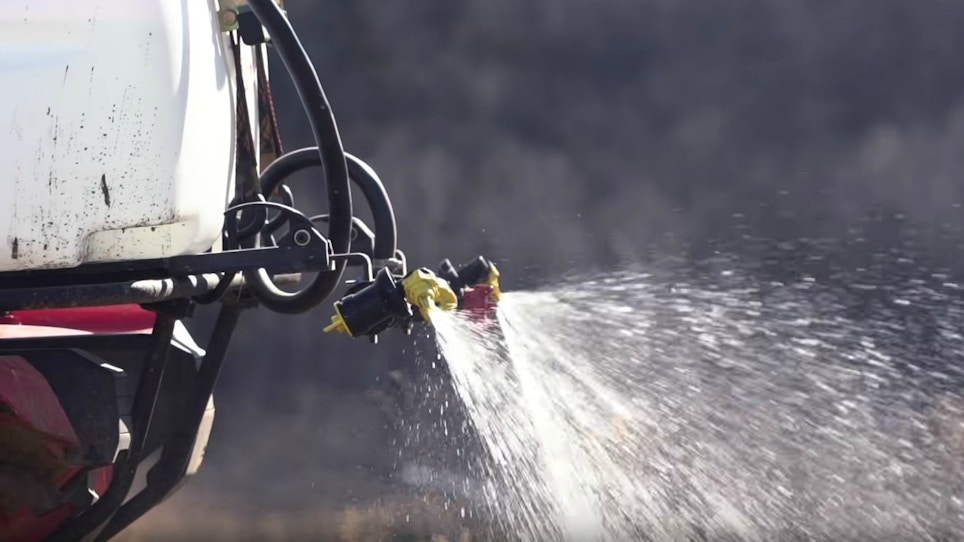Jeff Sturgis has been teaching and advising land managers since the 1980s. He’s worked in 26 states with approximately 800 clients. In other words, there isn’t much Jeff hasn’t seen when it comes to managing land for whitetails. In addition to his books, seminars and one-on-one consultations, Jeff has an extensive library of how-to videos on Youtube.

In the video below, Jeff provides an easy solution to calculating ATV sprayer rates. As you’ll see, he prefers to work backward, meaning he simply fills his ATV sprayer with 10 gallons of water (no expensive chemical yet) and then drives and sprays at 7 to 8 mph to test whether that amount covers 1 acre. If it doesn’t, then he adds another gallon or two to finish the space. Once he learns how much water is needed to cover 1 acre (it’s usually 12 to 13 gallons), he can easily figure how much water will be needed for a half acre, or 1.5 acres, etc.
Example: Let’s assume we want to build a new 1-acre food plot. If you’re trying to kill all weeds to build this new food plot, you need to apply 2 quarts of glyphosate (like Roundup) per acre. If your ATV sprayer/water test indicated you can effectively spray 1 acre with 12 gallons of water, than you simply mix 2 quarts of glyphosate with 12 gallons of water and start spraying.
If your new food plot is only a half-acre, then mix 1 quart of glyphosate with 6 gallons of water and start spraying. Remember to drive at 7 to 8 mph to ensure the same coverage rate as you discovered during your water-only ATV spray test.
After you learn the rate of your ATV sprayer, write it on the tank with a permanent marker so you don’t have to conduct the same water-only spray test next spring.






